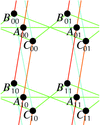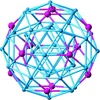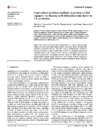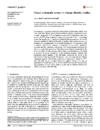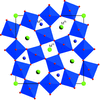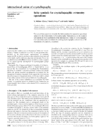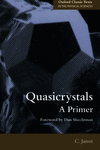issue contents
May 2014 issue

Cover illustration: The calculated distribution of X-ray intensities obtained from rocking a crystal plane about two orthogonal axes. The central peak represents the specular condition. The inset illustrates the capture area for a typical Bragg–Brentano diffractometer. Image from A new theory for X-ray diffraction by Paul F. Fewster [Acta Cryst. (2014), A70, 257–282].
mathematical crystallography
research papers
foundations
research papers
 access
access![[{\cal R}]](/a/issues/2014/03/00/pc5037/teximages/pc5037fi1.gif) factors widely used in standard crystallographic refinements. Fourier photodifference maps allow the visualization of the externally induced structural changes in the crystal, but also can be used during refinement to monitor its progress. Photodeformation maps are modified to separate the photo-induced structural change from the effect of the temperature increase on laser exposure.
factors widely used in standard crystallographic refinements. Fourier photodifference maps allow the visualization of the externally induced structural changes in the crystal, but also can be used during refinement to monitor its progress. Photodeformation maps are modified to separate the photo-induced structural change from the effect of the temperature increase on laser exposure.international union of crystallography


book reviews


 journal menu
journal menu










